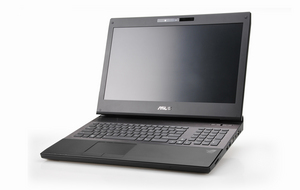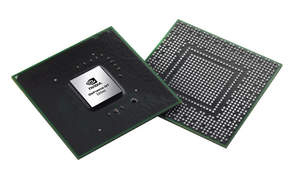TAIPEI, TAIWAN--(Marketwire - May 29, 2011) - COMPUTEX 2011 -- NVIDIA today unveiled the first gaming notebook graphics processing unit (GPU) in its award-winning GeForce® 500M Series of notebook GPUs.
The GeForce GTX 560M graphics processor hits the "sweet spot" for gaming notebooks by delivering a no-compromise gaming experience at full 1080p resolution in the hottest new DirectX 11 titles. For the first time, leading OEMs will also be offering GeForce GTX gaming GPUs with NVIDIA® Optimus™ technology.
"The GeForce GTX 560M and NVIDIA Optimus mean gamers get 50 frames per second in Duke Nukem Forever and five hours of battery life in Microsoft Office," said Rene Haas, general manager of notebook products at NVIDIA. "That's real power and real portability."
Available only with NVIDIA GPUs, NVIDIA Optimus technology enables extra-long battery life by automatically switching on and off the GPU so that it runs only when needed. The smart convenience of NVIDIA Optimus technology is designed into over 80 percent of GeForce 500M Series notebooks and is used by every major notebook OEM.
GeForce GTX 560M GPUs are "DirectX 11 Done Right," and offer even more performance-per-watt than the previous generation, with faster frame rates and more detail with the same battery life. The power of GeForce GTX GPUs means gamers can play at full 1080p high-definition resolutions with the advanced technology features that set GeForce GPUs apart from the competition, including:
- NVIDIA 3D Vision™ technology support, the #1 3D technology for notebooks
- NVIDIA PhysX® technology support, for in-game real-time physics effects
- NVIDIA CUDA® architecture support, for GPU computing applications
GTX GPUs also support NVIDIA SLI™ technology, the industry's most scalable multi-GPU platform for doubling gaming performance, and are also supported by the highly-praised NVIDIA Verde™ notebook drivers.
For thin-and-light notebooks, NVIDIA also refreshed its entry-level GeForce GT 500M GPUs with the arrival of the new GeForce GT 520MX GPU. GeForce GT 520MX offers better performance, wider support and a more advanced feature set than integrated graphicsi and offers a step forward from the existing GeForce GT 520M GPU.
Alienware and Toshiba will be offering notebooks featuring GeForce GTX 560M and Optimus technology. ASUS, Clevo, MSI and others will be offering notebooks featuring GeForce GTX 560M. ASUS, Samsung and others will be offering notebooks featuring GeForce GT 520MX.
For more information on GeForce 500M Series GPUs, please visit www.nvidia.com.
About NVIDIA
NVIDIA (
Certain statements in this press release including, but not limited to statements as to: the availability, benefits and impact of NVIDIA GeForce GPUs, Optimus technology, 3D Vision technology, PhysX technology, CUDA architecture, Verde notebook drivers and SLI technology; the benefits and impact of DirectX 11; the availability of notebook computers that feature GeForce GPUs; and the effects of the company's patents on modern computing are forward-looking statements that are subject to risks and uncertainties that could cause results to be materially different than expectations. Important factors that could cause actual results to differ materially include: global economic conditions; our reliance on third parties to manufacture, assemble, package and test our products; the impact of technological development and competition; development of faster or more efficient technology; design, manufacturing or software defects; changes in consumer preferences or demands; changes in industry standards and interfaces; unexpected loss of performance of our products or technologies when integrated into systems; as well as other factors detailed from time to time in the reports NVIDIA files with the Securities and Exchange Commission, or SEC, including its Form 10-K for the fiscal period ended January 30, 2011. Copies of reports filed with the SEC are posted on the company's website and are available from NVIDIA without charge. These forward-looking statements are not guarantees of future performance and speak only as of the date hereof, and, except as required by law, NVIDIA disclaims any obligation to update these forward-looking statements to reflect future events or circumstances.
© 2011 NVIDIA Corporation. All rights reserved. NVIDIA and the NVIDIA logo, 3D Vision, CUDA, GeForce, Optimus, PhysX, and SLI are trademarks and/or registered trademarks of NVIDIA Corporation in the U.S. and other countries. Other company and product names may be trademarks of the respective companies with which they are associated. Features, pricing, availability, and specifications are subject to change without notice.
i Compared to Intel HD Graphics 3000 in gaming performance.
Contact Information:
For further information, contact:
Brian Burke
NVIDIA Corporation
(512) 401-4385
bburke@nvidia.com


